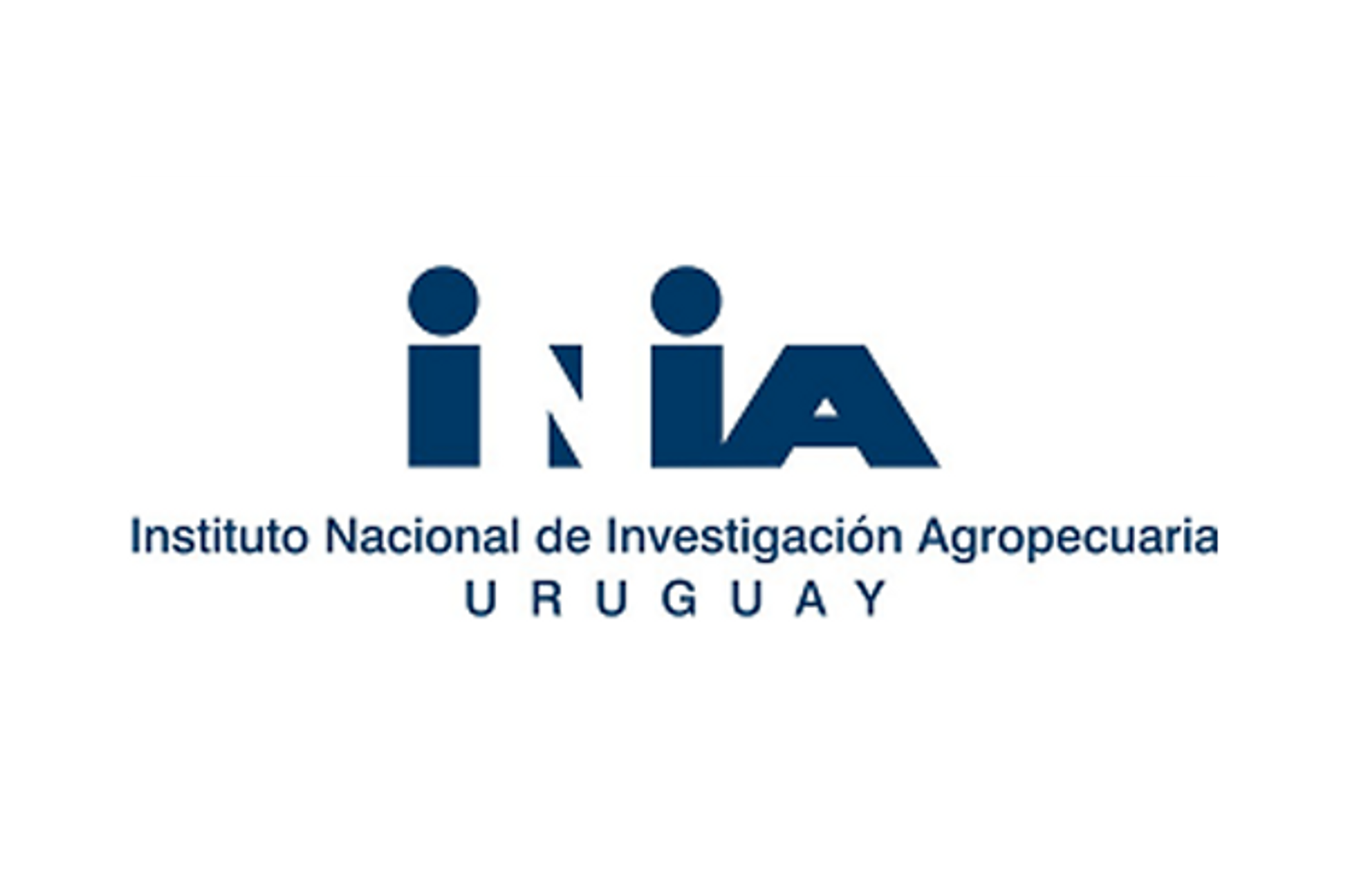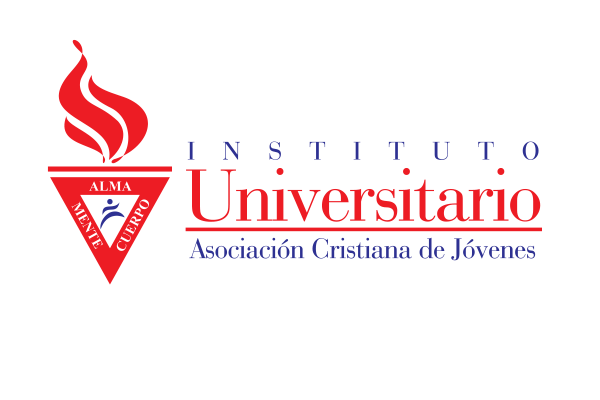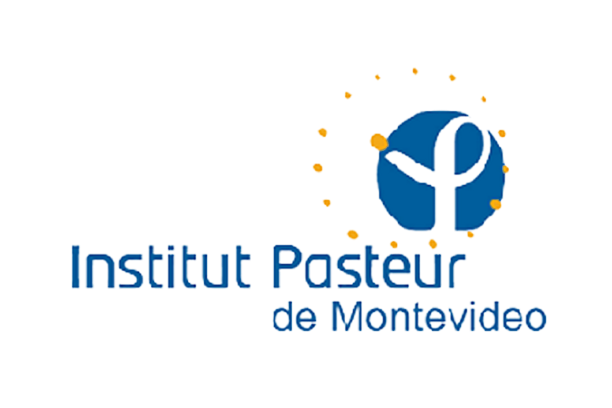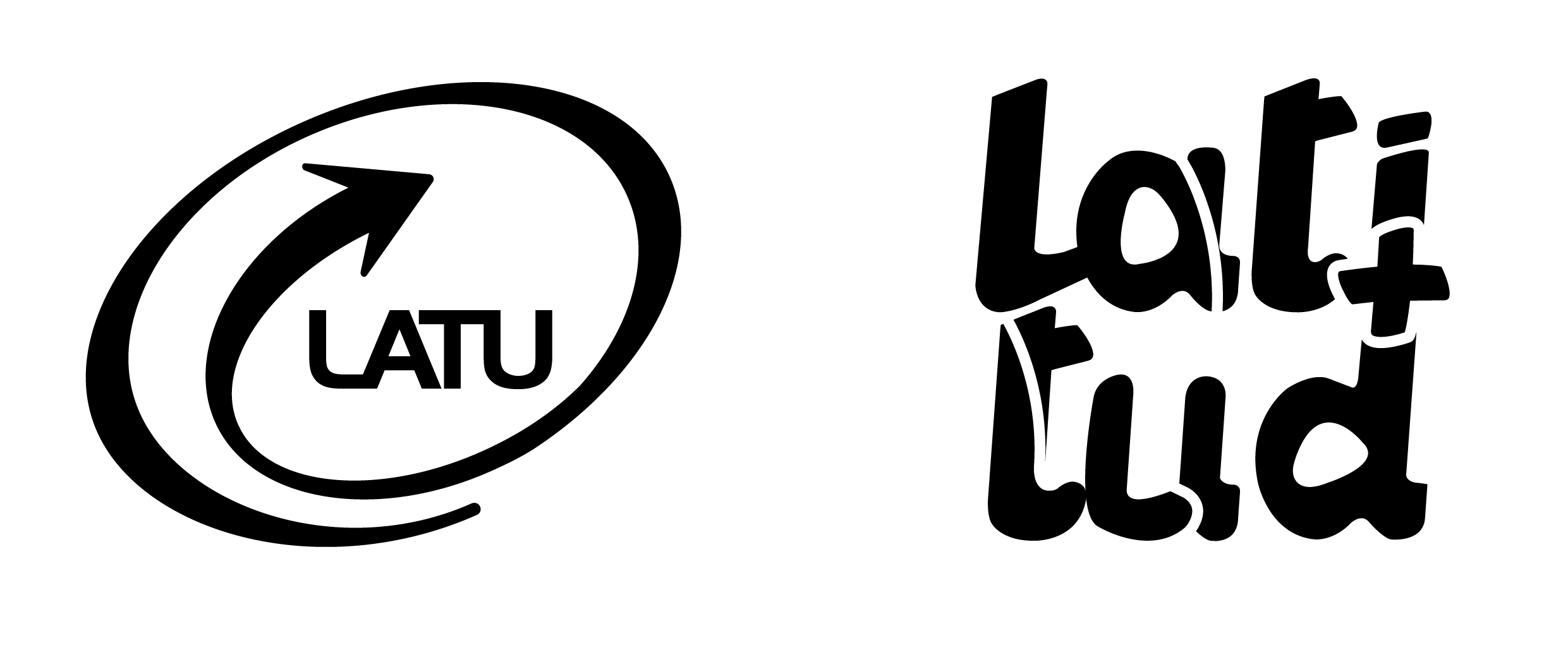Breeding strategies for improving pest and disease resistance in wheat
Supervisor(es): Poland, Jesse
Resumen:
Wheat is a vital cereal, providing 20% of the daily human nutritional requirements worldwide. Though there has been sizable yield gains and production increase, with the projected rise in food demand over the next 40 years, wheat yields must continue to increase at an accelerated pace to match the projected demand. However, yield production is constrained by biotic stresses and many breeding objectives remain for ‘yield maintenance’. Overcoming yield constraints and losses due to plant pathogens requires developing wheat varieties resilient against pathogens through genetic resistance genes. However, genetic diversity for resistance to several biotic stresses in the primary pool of wheat is limited, such as in the case of barley yellow dwarf (BYD), wheat blast (WB), and wheat curl mite (WCM). To date, only a few resistance genes have been named against these diseases and diseases. Interestingly, most of these resistances have been introgressed from wild relative species. Wheat wild relatives offer a potential trove of untapped resistance genes against the many pathogens that threaten our wheat crop. In this study, we applied breeding strategies for improving BYD, WB, and WCM resistance in wheat with the final goal of contributing disease-resistant wheat germplasm to broaden genetic resources available for wheat breeders to sustain wheat production. BYD is one of the most important viral diseases affecting wheat worldwide. Breeding for BYD resistance is very challenging due to the unpredictability and variability of its occurrence and difficulty of characterizing the symptoms. Four resistance genes have been named, with three of them donated by a wild relative of wheat Thinopyrum intermedium. In this study, we applied phenomics and genomics tools to better understand the resistance and tolerance to this disease and to facilitate the art of wheat improvement against BYD. Our results are promising but suggest that further research is needed to implement these strategies into the breeding pipeline. WB is an emerging disease with the potential to devastate wheat production. One strategy that is still effective to control WB is genetic resistance provided by the alien segment 2NVS introduced from Aegilops ventricosa into wheat. The genetic architecture behind 2NVS is still unknown, thus, our first objective was focused on identifying the resistant gene located in this segment to better understand this destructive disease. However, 2NVS resistance is slowly eroding and very limited resistance is available in wheat and more diverse sources should be searched out. In this study, we thus evaluated a panel of the wild diploid wheat, Aegilops tauschii, and identified and mapped new resistance sources against WB. This has laid the foundation for further experiments to clone these genes. WCM is a threatening pest for wheat, mainly by vectoring several viral diseases. To date, only five resistance genes have been identified and three of them were donated by Ae. tauschii. Since genetic resistance in the wheat germplasm is lacking, our study investigated the genetic basis of WCM resistance in Ae. tauschii. We mapped the resistance to chromosome 6D and found a single resistant haplotype across both Ae. tauschii lineages. We further showed that three previously named resistance genes all share the same haplotype, and we delimited the length of the introgressions into wheat. Moreover, we designed molecular markers, that once validated, will facilitate better use of this resistance in wheat. Overall, our results contribute to better understand the genetic basis of BYD, WB, and WCM resistance and highlight both the necessity and the promise to search for novel sources of resistance in wild wheat species to broaden the genetic diversity of resistance available for wheat improvement.
| 2021 | |
|
Agencia Nacional de Investigación e Innovación Kansas State University Instituto Nacional de Investigación Agropecuaria Comisión Fulbright |
|
|
Genomics Genetics Breeding Diseases Resistance Ciencias Agrícolas Agricultura, Silvicultura y Pesca Agronomía, reproducción y protección de plantas |
|
| Inglés | |
| Agencia Nacional de Investigación e Innovación | |
| REDI | |
|
https://krex.k-state.edu/handle/2097/41279
https://hdl.handle.net/20.500.12381/3430 |
|
| Acceso abierto | |
| Reconocimiento 4.0 Internacional. (CC BY) |
| _version_ | 1814959261934944256 |
|---|---|
| author | Silva, Paula |
| author_facet | Silva, Paula |
| author_role | author |
| bitstream.checksum.fl_str_mv | a4ce09f01b5dd771727aa05c73851623 90343e406565d9cf1416ddb73e228cb7 |
| bitstream.checksumAlgorithm.fl_str_mv | MD5 MD5 |
| bitstream.url.fl_str_mv | https://redi.anii.org.uy/jspui/bitstream/20.500.12381/3430/2/license.txt https://redi.anii.org.uy/jspui/bitstream/20.500.12381/3430/1/PhD_Dissertation_PaulaSilva2021.pdf |
| collection | REDI |
| dc.creator.advisor.none.fl_str_mv | Poland, Jesse |
| dc.creator.none.fl_str_mv | Silva, Paula |
| dc.date.accessioned.none.fl_str_mv | 2024-02-23T14:32:49Z |
| dc.date.available.none.fl_str_mv | 2024-02-23T14:32:49Z |
| dc.date.issued.none.fl_str_mv | 2021-01-28 |
| dc.description.abstract.none.fl_txt_mv | Wheat is a vital cereal, providing 20% of the daily human nutritional requirements worldwide. Though there has been sizable yield gains and production increase, with the projected rise in food demand over the next 40 years, wheat yields must continue to increase at an accelerated pace to match the projected demand. However, yield production is constrained by biotic stresses and many breeding objectives remain for ‘yield maintenance’. Overcoming yield constraints and losses due to plant pathogens requires developing wheat varieties resilient against pathogens through genetic resistance genes. However, genetic diversity for resistance to several biotic stresses in the primary pool of wheat is limited, such as in the case of barley yellow dwarf (BYD), wheat blast (WB), and wheat curl mite (WCM). To date, only a few resistance genes have been named against these diseases and diseases. Interestingly, most of these resistances have been introgressed from wild relative species. Wheat wild relatives offer a potential trove of untapped resistance genes against the many pathogens that threaten our wheat crop. In this study, we applied breeding strategies for improving BYD, WB, and WCM resistance in wheat with the final goal of contributing disease-resistant wheat germplasm to broaden genetic resources available for wheat breeders to sustain wheat production. BYD is one of the most important viral diseases affecting wheat worldwide. Breeding for BYD resistance is very challenging due to the unpredictability and variability of its occurrence and difficulty of characterizing the symptoms. Four resistance genes have been named, with three of them donated by a wild relative of wheat Thinopyrum intermedium. In this study, we applied phenomics and genomics tools to better understand the resistance and tolerance to this disease and to facilitate the art of wheat improvement against BYD. Our results are promising but suggest that further research is needed to implement these strategies into the breeding pipeline. WB is an emerging disease with the potential to devastate wheat production. One strategy that is still effective to control WB is genetic resistance provided by the alien segment 2NVS introduced from Aegilops ventricosa into wheat. The genetic architecture behind 2NVS is still unknown, thus, our first objective was focused on identifying the resistant gene located in this segment to better understand this destructive disease. However, 2NVS resistance is slowly eroding and very limited resistance is available in wheat and more diverse sources should be searched out. In this study, we thus evaluated a panel of the wild diploid wheat, Aegilops tauschii, and identified and mapped new resistance sources against WB. This has laid the foundation for further experiments to clone these genes. WCM is a threatening pest for wheat, mainly by vectoring several viral diseases. To date, only five resistance genes have been identified and three of them were donated by Ae. tauschii. Since genetic resistance in the wheat germplasm is lacking, our study investigated the genetic basis of WCM resistance in Ae. tauschii. We mapped the resistance to chromosome 6D and found a single resistant haplotype across both Ae. tauschii lineages. We further showed that three previously named resistance genes all share the same haplotype, and we delimited the length of the introgressions into wheat. Moreover, we designed molecular markers, that once validated, will facilitate better use of this resistance in wheat. Overall, our results contribute to better understand the genetic basis of BYD, WB, and WCM resistance and highlight both the necessity and the promise to search for novel sources of resistance in wild wheat species to broaden the genetic diversity of resistance available for wheat improvement. |
| dc.description.sponsorship.none.fl_txt_mv | Agencia Nacional de Investigación e Innovación Kansas State University Instituto Nacional de Investigación Agropecuaria Comisión Fulbright |
| dc.identifier.anii.es.fl_str_mv | POS_FUL_2016_1_1005356 |
| dc.identifier.other.none.fl_str_mv | https://krex.k-state.edu/handle/2097/41279 |
| dc.identifier.uri.none.fl_str_mv | https://hdl.handle.net/20.500.12381/3430 |
| dc.language.iso.none.fl_str_mv | eng |
| dc.publisher.es.fl_str_mv | Kansas State University |
| dc.relation.es.fl_str_mv | https://doi.org/10.1038/s41587-021-01058-4 https://doi.org/10.1093/g3journal/jkac064 |
| dc.rights.*.fl_str_mv | Acceso abierto |
| dc.rights.license.none.fl_str_mv | Reconocimiento 4.0 Internacional. (CC BY) |
| dc.rights.none.fl_str_mv | info:eu-repo/semantics/openAccess |
| dc.source.none.fl_str_mv | reponame:REDI instname:Agencia Nacional de Investigación e Innovación instacron:Agencia Nacional de Investigación e Innovación |
| dc.subject.anii.none.fl_str_mv | Ciencias Agrícolas Agricultura, Silvicultura y Pesca Agronomía, reproducción y protección de plantas |
| dc.subject.es.fl_str_mv | Genomics Genetics Breeding Diseases Resistance |
| dc.title.none.fl_str_mv | Breeding strategies for improving pest and disease resistance in wheat |
| dc.type.es.fl_str_mv | Tesis de doctorado |
| dc.type.none.fl_str_mv | info:eu-repo/semantics/doctoralThesis |
| dc.type.version.es.fl_str_mv | Publicado |
| dc.type.version.none.fl_str_mv | info:eu-repo/semantics/publishedVersion |
| description | Wheat is a vital cereal, providing 20% of the daily human nutritional requirements worldwide. Though there has been sizable yield gains and production increase, with the projected rise in food demand over the next 40 years, wheat yields must continue to increase at an accelerated pace to match the projected demand. However, yield production is constrained by biotic stresses and many breeding objectives remain for ‘yield maintenance’. Overcoming yield constraints and losses due to plant pathogens requires developing wheat varieties resilient against pathogens through genetic resistance genes. However, genetic diversity for resistance to several biotic stresses in the primary pool of wheat is limited, such as in the case of barley yellow dwarf (BYD), wheat blast (WB), and wheat curl mite (WCM). To date, only a few resistance genes have been named against these diseases and diseases. Interestingly, most of these resistances have been introgressed from wild relative species. Wheat wild relatives offer a potential trove of untapped resistance genes against the many pathogens that threaten our wheat crop. In this study, we applied breeding strategies for improving BYD, WB, and WCM resistance in wheat with the final goal of contributing disease-resistant wheat germplasm to broaden genetic resources available for wheat breeders to sustain wheat production. BYD is one of the most important viral diseases affecting wheat worldwide. Breeding for BYD resistance is very challenging due to the unpredictability and variability of its occurrence and difficulty of characterizing the symptoms. Four resistance genes have been named, with three of them donated by a wild relative of wheat Thinopyrum intermedium. In this study, we applied phenomics and genomics tools to better understand the resistance and tolerance to this disease and to facilitate the art of wheat improvement against BYD. Our results are promising but suggest that further research is needed to implement these strategies into the breeding pipeline. WB is an emerging disease with the potential to devastate wheat production. One strategy that is still effective to control WB is genetic resistance provided by the alien segment 2NVS introduced from Aegilops ventricosa into wheat. The genetic architecture behind 2NVS is still unknown, thus, our first objective was focused on identifying the resistant gene located in this segment to better understand this destructive disease. However, 2NVS resistance is slowly eroding and very limited resistance is available in wheat and more diverse sources should be searched out. In this study, we thus evaluated a panel of the wild diploid wheat, Aegilops tauschii, and identified and mapped new resistance sources against WB. This has laid the foundation for further experiments to clone these genes. WCM is a threatening pest for wheat, mainly by vectoring several viral diseases. To date, only five resistance genes have been identified and three of them were donated by Ae. tauschii. Since genetic resistance in the wheat germplasm is lacking, our study investigated the genetic basis of WCM resistance in Ae. tauschii. We mapped the resistance to chromosome 6D and found a single resistant haplotype across both Ae. tauschii lineages. We further showed that three previously named resistance genes all share the same haplotype, and we delimited the length of the introgressions into wheat. Moreover, we designed molecular markers, that once validated, will facilitate better use of this resistance in wheat. Overall, our results contribute to better understand the genetic basis of BYD, WB, and WCM resistance and highlight both the necessity and the promise to search for novel sources of resistance in wild wheat species to broaden the genetic diversity of resistance available for wheat improvement. |
| eu_rights_str_mv | openAccess |
| format | doctoralThesis |
| id | REDI_41a0e84b58f3c7bad6e859669465905c |
| identifier_str_mv | POS_FUL_2016_1_1005356 |
| instacron_str | Agencia Nacional de Investigación e Innovación |
| institution | Agencia Nacional de Investigación e Innovación |
| instname_str | Agencia Nacional de Investigación e Innovación |
| language | eng |
| network_acronym_str | REDI |
| network_name_str | REDI |
| oai_identifier_str | oai:redi.anii.org.uy:20.500.12381/3430 |
| publishDate | 2021 |
| reponame_str | REDI |
| repository.mail.fl_str_mv | jmaldini@anii.org.uy |
| repository.name.fl_str_mv | REDI - Agencia Nacional de Investigación e Innovación |
| repository_id_str | 9421 |
| rights_invalid_str_mv | Reconocimiento 4.0 Internacional. (CC BY) Acceso abierto |
| spelling | Reconocimiento 4.0 Internacional. (CC BY)Acceso abiertoinfo:eu-repo/semantics/openAccess2024-02-23T14:32:49Z2024-02-23T14:32:49Z2021-01-28https://krex.k-state.edu/handle/2097/41279https://hdl.handle.net/20.500.12381/3430POS_FUL_2016_1_1005356Wheat is a vital cereal, providing 20% of the daily human nutritional requirements worldwide. Though there has been sizable yield gains and production increase, with the projected rise in food demand over the next 40 years, wheat yields must continue to increase at an accelerated pace to match the projected demand. However, yield production is constrained by biotic stresses and many breeding objectives remain for ‘yield maintenance’. Overcoming yield constraints and losses due to plant pathogens requires developing wheat varieties resilient against pathogens through genetic resistance genes. However, genetic diversity for resistance to several biotic stresses in the primary pool of wheat is limited, such as in the case of barley yellow dwarf (BYD), wheat blast (WB), and wheat curl mite (WCM). To date, only a few resistance genes have been named against these diseases and diseases. Interestingly, most of these resistances have been introgressed from wild relative species. Wheat wild relatives offer a potential trove of untapped resistance genes against the many pathogens that threaten our wheat crop. In this study, we applied breeding strategies for improving BYD, WB, and WCM resistance in wheat with the final goal of contributing disease-resistant wheat germplasm to broaden genetic resources available for wheat breeders to sustain wheat production. BYD is one of the most important viral diseases affecting wheat worldwide. Breeding for BYD resistance is very challenging due to the unpredictability and variability of its occurrence and difficulty of characterizing the symptoms. Four resistance genes have been named, with three of them donated by a wild relative of wheat Thinopyrum intermedium. In this study, we applied phenomics and genomics tools to better understand the resistance and tolerance to this disease and to facilitate the art of wheat improvement against BYD. Our results are promising but suggest that further research is needed to implement these strategies into the breeding pipeline. WB is an emerging disease with the potential to devastate wheat production. One strategy that is still effective to control WB is genetic resistance provided by the alien segment 2NVS introduced from Aegilops ventricosa into wheat. The genetic architecture behind 2NVS is still unknown, thus, our first objective was focused on identifying the resistant gene located in this segment to better understand this destructive disease. However, 2NVS resistance is slowly eroding and very limited resistance is available in wheat and more diverse sources should be searched out. In this study, we thus evaluated a panel of the wild diploid wheat, Aegilops tauschii, and identified and mapped new resistance sources against WB. This has laid the foundation for further experiments to clone these genes. WCM is a threatening pest for wheat, mainly by vectoring several viral diseases. To date, only five resistance genes have been identified and three of them were donated by Ae. tauschii. Since genetic resistance in the wheat germplasm is lacking, our study investigated the genetic basis of WCM resistance in Ae. tauschii. We mapped the resistance to chromosome 6D and found a single resistant haplotype across both Ae. tauschii lineages. We further showed that three previously named resistance genes all share the same haplotype, and we delimited the length of the introgressions into wheat. Moreover, we designed molecular markers, that once validated, will facilitate better use of this resistance in wheat. Overall, our results contribute to better understand the genetic basis of BYD, WB, and WCM resistance and highlight both the necessity and the promise to search for novel sources of resistance in wild wheat species to broaden the genetic diversity of resistance available for wheat improvement.Agencia Nacional de Investigación e InnovaciónKansas State UniversityInstituto Nacional de Investigación AgropecuariaComisión FulbrightengKansas State Universityhttps://doi.org/10.1038/s41587-021-01058-4https://doi.org/10.1093/g3journal/jkac064GenomicsGeneticsBreedingDiseasesResistanceCiencias AgrícolasAgricultura, Silvicultura y PescaAgronomía, reproducción y protección de plantasBreeding strategies for improving pest and disease resistance in wheatTesis de doctoradoPublicadoinfo:eu-repo/semantics/publishedVersioninfo:eu-repo/semantics/doctoralThesis//Ciencias Agrícolas/Agricultura, Silvicultura y Pesca/Agronomía, reproducción y protección de plantasreponame:REDIinstname:Agencia Nacional de Investigación e Innovacióninstacron:Agencia Nacional de Investigación e InnovaciónSilva, PaulaPoland, JesseLICENSElicense.txtlicense.txttext/plain; charset=utf-84967https://redi.anii.org.uy/jspui/bitstream/20.500.12381/3430/2/license.txta4ce09f01b5dd771727aa05c73851623MD52ORIGINALPhD_Dissertation_PaulaSilva2021.pdfPhD_Dissertation_PaulaSilva2021.pdfDocumento de tesisapplication/pdf39224662https://redi.anii.org.uy/jspui/bitstream/20.500.12381/3430/1/PhD_Dissertation_PaulaSilva2021.pdf90343e406565d9cf1416ddb73e228cb7MD5120.500.12381/34302024-02-23 11:32:50.802oai:redi.anii.org.uy:20.500.12381/3430PHA+PGI+QUNVRVJETyBERSBDRVNJT04gTk8gRVhDTFVTSVZBIERFIERFUkVDSE9TPC9iPjwvcD4NCg0KPHA+QWNlcHRhbmRvIGxhIGNlc2nDs24gZGUgZGVyZWNob3MgZWwgdXN1YXJpbyBERUNMQVJBIHF1ZSBvc3RlbnRhIGxhIGNvbmRpY2nDs24gZGUgYXV0b3IgZW4gZWwgc2VudGlkbyBxdWUgb3RvcmdhIGxhIGxlZ2lzbGFjacOzbiB2aWdlbnRlIHNvYnJlIHByb3BpZWRhZCBpbnRlbGVjdHVhbCBkZSBsYSBvYnJhIG9yaWdpbmFsIHF1ZSBlc3TDoSBlbnZpYW5kbyAo4oCcbGEgb2JyYeKAnSkuIEVuIGNhc28gZGUgc2VyIGNvdGl0dWxhciwgZWwgYXV0b3IgZGVjbGFyYSBxdWUgY3VlbnRhIGNvbiBlbCAgY29uc2VudGltaWVudG8gZGUgbG9zIHJlc3RhbnRlcyB0aXR1bGFyZXMgcGFyYSBoYWNlciBsYSBwcmVzZW50ZSBjZXNpw7NuLiBFbiBjYXNvIGRlIHByZXZpYSBjZXNpw7NuIGRlIGxvcyBkZXJlY2hvcyBkZSBleHBsb3RhY2nDs24gc29icmUgbGEgb2JyYSBhIHRlcmNlcm9zLCBlbCBhdXRvciBkZWNsYXJhIHF1ZSB0aWVuZSBsYSBhdXRvcml6YWNpw7NuIGV4cHJlc2EgZGUgZGljaG9zIHRpdHVsYXJlcyBkZSBkZXJlY2hvcyBhIGxvcyBmaW5lcyBkZSBlc3RhIGNlc2nDs24sIG8gYmllbiBxdWUgaGEgY29uc2VydmFkbyBsYSBmYWN1bHRhZCBkZSBjZWRlciBlc3RvcyBkZXJlY2hvcyBlbiBsYSBmb3JtYSBwcmV2aXN0YSBlbiBsYSBwcmVzZW50ZSBjZXNpw7NuLjwvcD4NCg0KPHA+Q29uIGVsIGZpbiBkZSBkYXIgbGEgbcOheGltYSBkaWZ1c2nDs24gYSBsYSBvYnJhIGEgdHJhdsOpcyBkZWwgcmVwb3NpdG9yaW8gZGUgYWNjZXNvIGFiaWVydG8gUkVESSAoaHR0cHM6Ly9yZWRpLmFuaWkub3JnLnV5KSwgZWwgQVVUT1IgQ0VERSBhIDxiPkFnZW5jaWEgTmFjaW9uYWwgZGUgSW52ZXN0aWdhY2nDs24gZSBJbm5vdmFjacOzbjwvYj4gKDxiPkFOSUk8L2I+KSwgZGUgZm9ybWEgZ3JhdHVpdGEgeSBOTyBFWENMVVNJVkEsIGNvbiBjYXLDoWN0ZXIgaXJyZXZvY2FibGUgZSBpbGltaXRhZG8gZW4gZWwgdGllbXBvIHkgY29uIMOhbWJpdG8gbXVuZGlhbCwgbG9zIGRlcmVjaG9zIGRlIHJlcHJvZHVjY2nDs24sIGRlIGRpc3RyaWJ1Y2nDs24sIGRlIGNvbXVuaWNhY2nDs24gcMO6YmxpY2EsIGluY2x1aWRvIGVsIGRlcmVjaG8gZGUgcHVlc3RhIGEgZGlzcG9zaWNpw7NuIGVsZWN0csOzbmljYSwgcGFyYSBxdWUgcHVlZGEgc2VyIHV0aWxpemFkYSBkZSBmb3JtYSBsaWJyZSB5IGdyYXR1aXRhIHBvciB0b2RvcyBsb3MgcXVlIGxvIGRlc2Vlbi48L3A+DQoNCjxwPkxhIGNlc2nDs24gc2UgcmVhbGl6YSBiYWpvIGxhcyBzaWd1aWVudGVzIGNvbmRpY2lvbmVzOjwvcD4NCg0KPHA+TGEgdGl0dWxhcmlkYWQgZGUgbGEgb2JyYSBzZWd1aXLDoSBjb3JyZXNwb25kaWVuZG8gYWwgQXV0b3IgeSBsYSBwcmVzZW50ZSBjZXNpw7NuIGRlIGRlcmVjaG9zIHBlcm1pdGlyw6EgYSA8Yj5BTklJPC9iPjo8L3A+DQoNCjx1bD4NCjxsaSB2YWx1ZT0oYSk+VHJhbnNmb3JtYXIgbGEgb2JyYSBlbiBsYSBtZWRpZGEgZW4gcXVlIHNlYSBuZWNlc2FyaW8gcGFyYSBhZGFwdGFybGEgYSBjdWFscXVpZXIgdGVjbm9sb2fDrWEgc3VzY2VwdGlibGUgZGUgaW5jb3Jwb3JhY2nDs24gYSBJbnRlcm5ldDsgcmVhbGl6YXIgbGFzIGFkYXB0YWNpb25lcyBuZWNlc2FyaWFzIHBhcmEgaGFjZXIgcG9zaWJsZSBzdSBhY2Nlc28geSB2aXN1YWxpemFjacOzbiBwZXJtYW5lbnRlLCBhw7puIHBvciBwYXJ0ZSBkZSBwZXJzb25hcyBjb24gZGlzY2FwYWNpZGFkLCByZWFsaXphciBsYXMgbWlncmFjaW9uZXMgZGUgZm9ybWF0b3MgcGFyYSBhc2VndXJhciBsYSBwcmVzZXJ2YWNpw7NuIGEgbGFyZ28gcGxhem8sIGluY29ycG9yYXIgbG9zIG1ldGFkYXRvcyBuZWNlc2FyaW9zIHBhcmEgcmVhbGl6YXIgZWwgcmVnaXN0cm8gZGUgbGEgb2JyYSwgZSBpbmNvcnBvcmFyIHRhbWJpw6luIOKAnG1hcmNhcyBkZSBhZ3Vh4oCdIG8gY3VhbHF1aWVyIG90cm8gc2lzdGVtYSBkZSBzZWd1cmlkYWQgbyBkZSBwcm90ZWNjacOzbiBvIGRlIGlkZW50aWZpY2FjacOzbiBkZSBwcm9jZWRlbmNpYS4gRW4gbmluZ8O6biBjYXNvIGRpY2hhcyBtb2RpZmljYWNpb25lcyBpbXBsaWNhcsOhbiBhZHVsdGVyYWNpb25lcyBlbiBlbCBjb250ZW5pZG8gZGUgbGEgb2JyYS48L2xpPiANCjxsaSB2YWx1ZT0oYik+UmVwcm9kdWNpciBsYSBvYnJhIGVuIHVuIG1lZGlvIGRpZ2l0YWwgcGFyYSBzdSBpbmNvcnBvcmFjacOzbiBhIHNpc3RlbWFzIGRlIGLDunNxdWVkYSB5IHJlY3VwZXJhY2nDs24sIGluY2x1eWVuZG8gZWwgZGVyZWNobyBhIHJlcHJvZHVjaXIgeSBhbG1hY2VuYXJsYSBlbiBzZXJ2aWRvcmVzIHUgb3Ryb3MgbWVkaW9zIGRpZ2l0YWxlcyBhIGxvcyBlZmVjdG9zIGRlIHNlZ3VyaWRhZCB5IHByZXNlcnZhY2nDs24uPC9saT4gDQo8bGkgdmFsdWU9KGMpPlBlcm1pdGlyIGEgbG9zIHVzdWFyaW9zIGxhIGRlc2NhcmdhIGRlIGNvcGlhcyBlbGVjdHLDs25pY2FzIGRlIGxhIG9icmEgZW4gdW4gc29wb3J0ZSBkaWdpdGFsLjwvbGk+IA0KPGxpIHZhbHVlPShkKT5SZWFsaXphciBsYSBjb211bmljYWNpw7NuIHDDumJsaWNhIHkgcHVlc3RhIGEgZGlzcG9zaWNpw7NuIGRlIGxhIG9icmEgYWNjZXNpYmxlIGRlIG1vZG8gbGlicmUgeSBncmF0dWl0byBhIHRyYXbDqXMgZGUgSW50ZXJuZXQuDQo8L3VsPg0KDQo8cD5FbiB2aXJ0dWQgZGVsIGNhcsOhY3RlciBubyBleGNsdXNpdm8gZGUgbGEgY2VzacOzbiwgZWwgQXV0b3IgY29uc2VydmEgdG9kb3MgbG9zIGRlcmVjaG9zIGRlIGF1dG9yIHNvYnJlIGxhIG9icmEsIHkgcG9kcsOhIHBvbmVybGEgYSBkaXNwb3NpY2nDs24gZGVsIHDDumJsaWNvIGVuIGVzdGEgeSBlbiBwb3N0ZXJpb3JlcyB2ZXJzaW9uZXMsIGEgdHJhdsOpcyBkZSBsb3MgbWVkaW9zIHF1ZSBlc3RpbWUgb3BvcnR1bm9zLjwvcD4NCg0KPHA+RWwgQXV0b3IgZGVjbGFyYSBiYWpvIGp1cmFtZW50byBxdWUgbGEgcHJlc2VudGUgY2VzacOzbiBubyBpbmZyaW5nZSBuaW5nw7puIGRlcmVjaG8gZGUgdGVyY2Vyb3MsIHlhIHNlYW4gZGUgcHJvcGllZGFkIGluZHVzdHJpYWwsIGludGVsZWN0dWFsIG8gY3VhbHF1aWVyIG90cm8geSBnYXJhbnRpemEgcXVlIGVsIGNvbnRlbmlkbyBkZSBsYSBvYnJhIG5vIGF0ZW50YSBjb250cmEgbG9zIGRlcmVjaG9zIGFsIGhvbm9yLCBhIGxhIGludGltaWRhZCB5IGEgbGEgaW1hZ2VuIGRlIHRlcmNlcm9zLCBuaSBlcyBkaXNjcmltaW5hdG9yaW8uIDxiPkFOSUk8L2I+IGVzdGFyw6EgZXhlbnRhIGRlIGxhIHJldmlzacOzbiBkZWwgY29udGVuaWRvIGRlIGxhIG9icmEsIHF1ZSBlbiB0b2RvIGNhc28gcGVybWFuZWNlcsOhIGJham8gbGEgcmVzcG9uc2FiaWxpZGFkIGV4Y2x1c2l2YSBkZWwgQXV0b3IuPC9wPg0KDQo8cD5MYSBvYnJhIHNlIHBvbmRyw6EgYSBkaXNwb3NpY2nDs24gZGUgbG9zIHVzdWFyaW9zIHBhcmEgcXVlIGhhZ2FuIGRlIGVsbGEgdW4gdXNvIGp1c3RvIHkgcmVzcGV0dW9zbyBkZSBsb3MgZGVyZWNob3MgZGVsIGF1dG9yIHkgY29uIGZpbmVzIGRlIGVzdHVkaW8sIGludmVzdGlnYWNpw7NuLCBvIGN1YWxxdWllciBvdHJvIGZpbiBsw61jaXRvLiBFbCBtZW5jaW9uYWRvIHVzbywgbcOhcyBhbGzDoSBkZSBsYSBjb3BpYSBwcml2YWRhLCByZXF1ZXJpcsOhIHF1ZSBzZSBjaXRlIGxhIGZ1ZW50ZSB5IHNlIHJlY29ub3pjYSBsYSBhdXRvcsOtYS4gQSB0YWxlcyBmaW5lcyBlbCBBdXRvciBhY2VwdGEgZWwgdXNvIGRlIGxpY2VuY2lhcyBDcmVhdGl2ZSBDb21tb25zIHkgRUxJR0UgdW5hIGRlIGVzdGFzIGxpY2VuY2lhcyBlc3RhbmRhcml6YWRhcyBhIGxvcyBmaW5lcyBkZSBjb211bmljYXIgc3Ugb2JyYS48L3A+DQoNCjxwPkVsIEF1dG9yLCBjb21vIGdhcmFudGUgZGUgbGEgYXV0b3LDrWEgZGUgbGEgb2JyYSB5IGVuIHJlbGFjacOzbiBhIGxhIG1pc21hLCBkZWNsYXJhIHF1ZSA8Yj5BTklJPC9iPiBzZSBlbmN1ZW50cmEgbGlicmUgZGUgdG9kbyB0aXBvIGRlIHJlc3BvbnNhYmlsaWRhZCwgc2VhIMOpc3RhIGNpdmlsLCBhZG1pbmlzdHJhdGl2YSBvIHBlbmFsLCB5IHF1ZSDDqWwgbWlzbW8gYXN1bWUgbGEgcmVzcG9uc2FiaWxpZGFkIGZyZW50ZSBhIGN1YWxxdWllciByZWNsYW1vIG8gZGVtYW5kYSBwb3IgcGFydGUgZGUgdGVyY2Vyb3MuIDxiPkFOSUk8L2I+IGVzdGFyw6EgZXhlbnRhIGRlIGVqZXJjaXRhciBhY2Npb25lcyBsZWdhbGVzIGVuIG5vbWJyZSBkZWwgQXV0b3IgZW4gZWwgc3VwdWVzdG8gZGUgaW5mcmFjY2lvbmVzIGEgZGVyZWNob3MgZGUgcHJvcGllZGFkIGludGVsZWN0dWFsIGRlcml2YWRvcyBkZWwgZGVww7NzaXRvIHkgYXJjaGl2byBkZSBsYSBvYnJhLjwvcD4NCg0KPHA+PGI+QU5JSTwvYj4gbm90aWZpY2Fyw6EgYWwgQXV0b3IgZGUgY3VhbHF1aWVyIHJlY2xhbWFjacOzbiBxdWUgcmVjaWJhIGRlIHRlcmNlcm9zIGVuIHJlbGFjacOzbiBjb24gbGEgb2JyYSB5LCBlbiBwYXJ0aWN1bGFyLCBkZSByZWNsYW1hY2lvbmVzIHJlbGF0aXZhcyBhIGxvcyBkZXJlY2hvcyBkZSBwcm9waWVkYWQgaW50ZWxlY3R1YWwgc29icmUgZWxsYS48L3A+DQoNCjxwPkVsIEF1dG9yIHBvZHLDoSBzb2xpY2l0YXIgZWwgcmV0aXJvIG8gbGEgaW52aXNpYmlsaXphY2nDs24gZGUgbGEgb2JyYSBkZSBSRURJIHPDs2xvIHBvciBjYXVzYSBqdXN0aWZpY2FkYS4gQSB0YWwgZmluIGRlYmVyw6EgbWFuaWZlc3RhciBzdSB2b2x1bnRhZCBlbiBmb3JtYSBmZWhhY2llbnRlIHkgYWNyZWRpdGFyIGRlYmlkYW1lbnRlIGxhIGNhdXNhIGp1c3RpZmljYWRhLiBBc2ltaXNtbyA8Yj5BTklJPC9iPiBwb2Ryw6EgcmV0aXJhciBvIGludmlzaWJpbGl6YXIgbGEgb2JyYSBkZSBSRURJLCBwcmV2aWEgbm90aWZpY2FjacOzbiBhbCBBdXRvciwgZW4gc3VwdWVzdG9zIHN1ZmljaWVudGVtZW50ZSBqdXN0aWZpY2Fkb3MsIG8gZW4gY2FzbyBkZSByZWNsYW1hY2lvbmVzIGRlIHRlcmNlcm9zLjwvcD4=Gobiernohttps://www.anii.org.uy/https://redi.anii.org.uy/oai/requestjmaldini@anii.org.uyUruguayopendoar:94212024-02-23T14:32:50REDI - Agencia Nacional de Investigación e Innovaciónfalse |
| spellingShingle | Breeding strategies for improving pest and disease resistance in wheat Silva, Paula Genomics Genetics Breeding Diseases Resistance Ciencias Agrícolas Agricultura, Silvicultura y Pesca Agronomía, reproducción y protección de plantas |
| status_str | publishedVersion |
| title | Breeding strategies for improving pest and disease resistance in wheat |
| title_full | Breeding strategies for improving pest and disease resistance in wheat |
| title_fullStr | Breeding strategies for improving pest and disease resistance in wheat |
| title_full_unstemmed | Breeding strategies for improving pest and disease resistance in wheat |
| title_short | Breeding strategies for improving pest and disease resistance in wheat |
| title_sort | Breeding strategies for improving pest and disease resistance in wheat |
| topic | Genomics Genetics Breeding Diseases Resistance Ciencias Agrícolas Agricultura, Silvicultura y Pesca Agronomía, reproducción y protección de plantas |
| url | https://krex.k-state.edu/handle/2097/41279 https://hdl.handle.net/20.500.12381/3430 |












